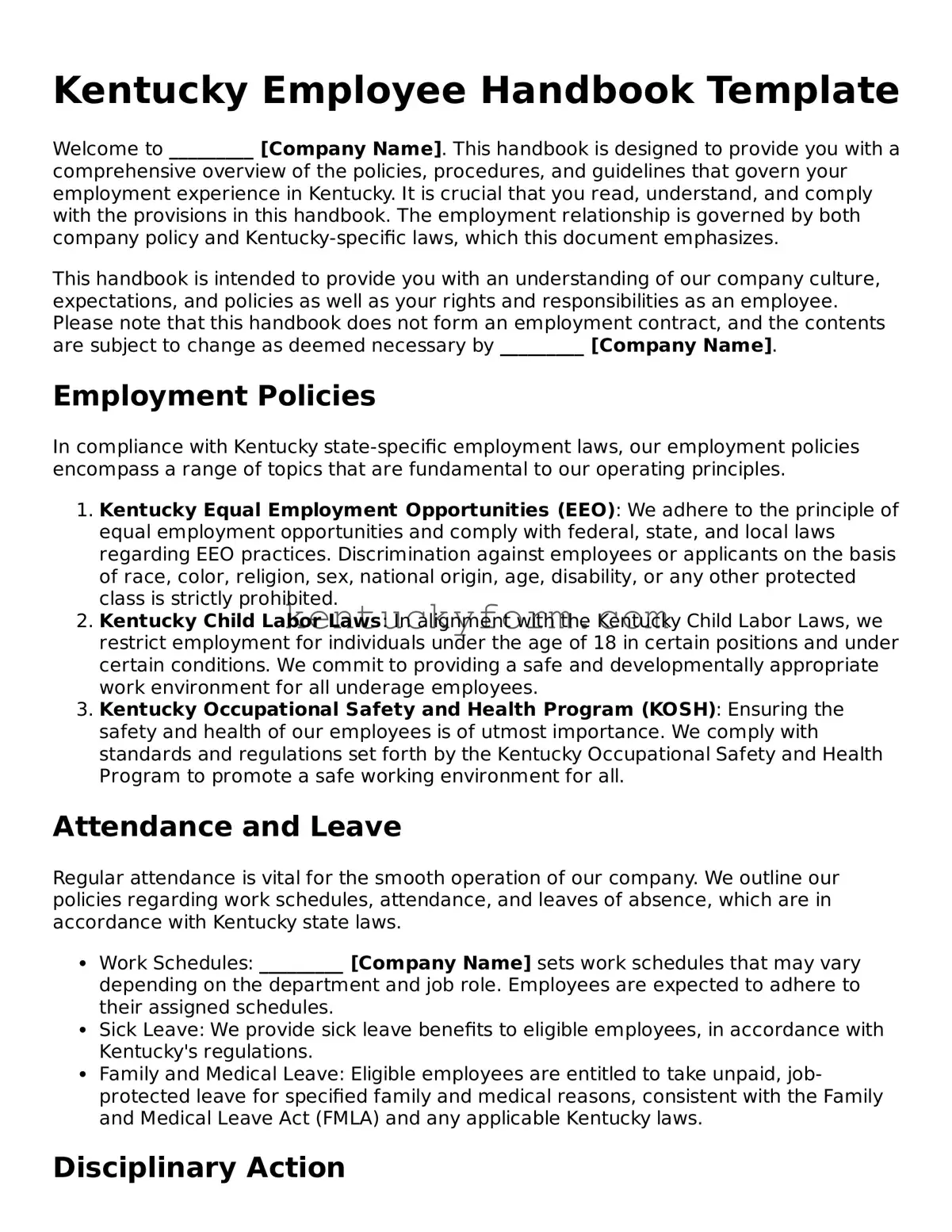Kentucky Employee Handbook Template
Welcome to _________ [Company Name]. This handbook is designed to provide you with a comprehensive overview of the policies, procedures, and guidelines that govern your employment experience in Kentucky. It is crucial that you read, understand, and comply with the provisions in this handbook. The employment relationship is governed by both company policy and Kentucky-specific laws, which this document emphasizes.
This handbook is intended to provide you with an understanding of our company culture, expectations, and policies as well as your rights and responsibilities as an employee. Please note that this handbook does not form an employment contract, and the contents are subject to change as deemed necessary by _________ [Company Name].
Employment Policies
In compliance with Kentucky state-specific employment laws, our employment policies encompass a range of topics that are fundamental to our operating principles.
- Kentucky Equal Employment Opportunities (EEO): We adhere to the principle of equal employment opportunities and comply with federal, state, and local laws regarding EEO practices. Discrimination against employees or applicants on the basis of race, color, religion, sex, national origin, age, disability, or any other protected class is strictly prohibited.
- Kentucky Child Labor Laws: In alignment with the Kentucky Child Labor Laws, we restrict employment for individuals under the age of 18 in certain positions and under certain conditions. We commit to providing a safe and developmentally appropriate work environment for all underage employees.
- Kentucky Occupational Safety and Health Program (KOSH): Ensuring the safety and health of our employees is of utmost importance. We comply with standards and regulations set forth by the Kentucky Occupational Safety and Health Program to promote a safe working environment for all.
Attendance and Leave
Regular attendance is vital for the smooth operation of our company. We outline our policies regarding work schedules, attendance, and leaves of absence, which are in accordance with Kentucky state laws.
- Work Schedules: _________ [Company Name] sets work schedules that may vary depending on the department and job role. Employees are expected to adhere to their assigned schedules.
- Sick Leave: We provide sick leave benefits to eligible employees, in accordance with Kentucky's regulations.
- Family and Medical Leave: Eligible employees are entitled to take unpaid, job-protected leave for specified family and medical reasons, consistent with the Family and Medical Leave Act (FMLA) and any applicable Kentucky laws.
Disciplinary Action
We have established a disciplinary action policy to address instances of employee misconduct or failure to meet company standards. This policy is designed to be fair and consistent, ensuring that employees understand the consequences of their actions and have the opportunity to improve their performance.
Employee Acknowledgment
This handbook is to be acknowledged by all employees as a condition of employment. By signing below, you acknowledge that you have received, read, understood, and agree to comply with the policies and procedures outlined in this handbook.
Employee Name: ___________________________
Signature: _______________________________
Date: ____________________________________
